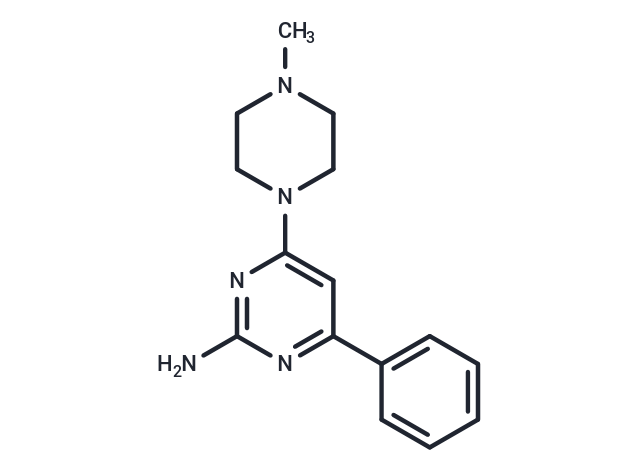Shopping Cart
Remove All Your shopping cart is currently empty
Your shopping cart is currently empty
VUF10460, a non-imidazole histamine H4 receptor agonist, [58C8-51-20-3] is structurally classified under the chlorobenzylpiperazine ethers with the IUPAC designation (2-[(2-chlorophenyl)methyl]-1-piperazinyl)(1H-indol-3-yl)methanone. It is typically utilized in pharmacological research and exhibits specificity for the H4 subtype, making it a valuable tool in immunological studies.

| Pack Size | Price | USA Warehouse | Global Warehouse | Quantity |
|---|---|---|---|---|
| 5 mg | $29 | In Stock | In Stock | |
| 10 mg | $49 | In Stock | In Stock | |
| 25 mg | $98 | In Stock | In Stock | |
| 50 mg | $173 | In Stock | In Stock | |
| 100 mg | $270 | In Stock | In Stock | |
| 200 mg | $398 | In Stock | In Stock | |
| 1 mL x 10 mM (in DMSO) | $34 | In Stock | In Stock |
| Description | VUF10460, a non-imidazole histamine H4 receptor agonist, [58C8-51-20-3] is structurally classified under the chlorobenzylpiperazine ethers with the IUPAC designation (2-[(2-chlorophenyl)methyl]-1-piperazinyl)(1H-indol-3-yl)methanone. It is typically utilized in pharmacological research and exhibits specificity for the H4 subtype, making it a valuable tool in immunological studies. |
| Targets&IC50 | H4 receptor:7.46(pKi) |
| In vitro | UF10460 exhibits binding affinities to rat H3 and H4 receptors with pKi values of 5.75 and 7.46, respectively, whereas VUF10460 demonstrates approximately 50-fold selectivity for the rat H4 receptor over the H3 receptor [1]. |
| In vivo | HCl-induced rat gastric lesions are significantly enhanced by the H4 receptor agonist VUF10460, an effect not altered by the H4 receptor antagonist JNJ7777120[1]. VUF10460 exhibits approximately 50-fold selectivity for the rat H(4) receptor over the H(3) receptor. |
| Molecular Weight | 269.34 |
| Formula | C15H19N5 |
| Cas No. | 1028327-66-3 |
| Smiles | CN1CCN(CC1)c1cc(nc(N)n1)-c1ccccc1 |
| Relative Density. | 1.187 g/cm3 (Predicted) |
| Storage | Powder: -20°C for 3 years | In solvent: -80°C for 1 year | Shipping with blue ice/Shipping at ambient temperature. | |||||||||||||||||||||||||||||||||||
| Solubility Information | DMSO: 45 mg/mL (167.08 mM), Sonication is recommended. | |||||||||||||||||||||||||||||||||||
| In Vivo Formulation | 10% DMSO+40% PEG300+5% Tween 80+45% Saline: 2 mg/mL (7.43 mM), Sonication is recommended. Please add the solvents sequentially, clarifying the solution as much as possible before adding the next one. Dissolve by heating and/or sonication if necessary. Working solution is recommended to be prepared and used immediately. The formulation provided above is for reference purposes only. In vivo formulations may vary and should be modified based on specific experimental conditions. | |||||||||||||||||||||||||||||||||||
Solution Preparation Table | ||||||||||||||||||||||||||||||||||||
DMSO
| ||||||||||||||||||||||||||||||||||||
| Size | Quantity | Unit Price | Amount | Operation |
|---|

Copyright © 2015-2025 TargetMol Chemicals Inc. All Rights Reserved.